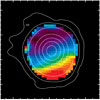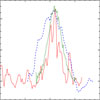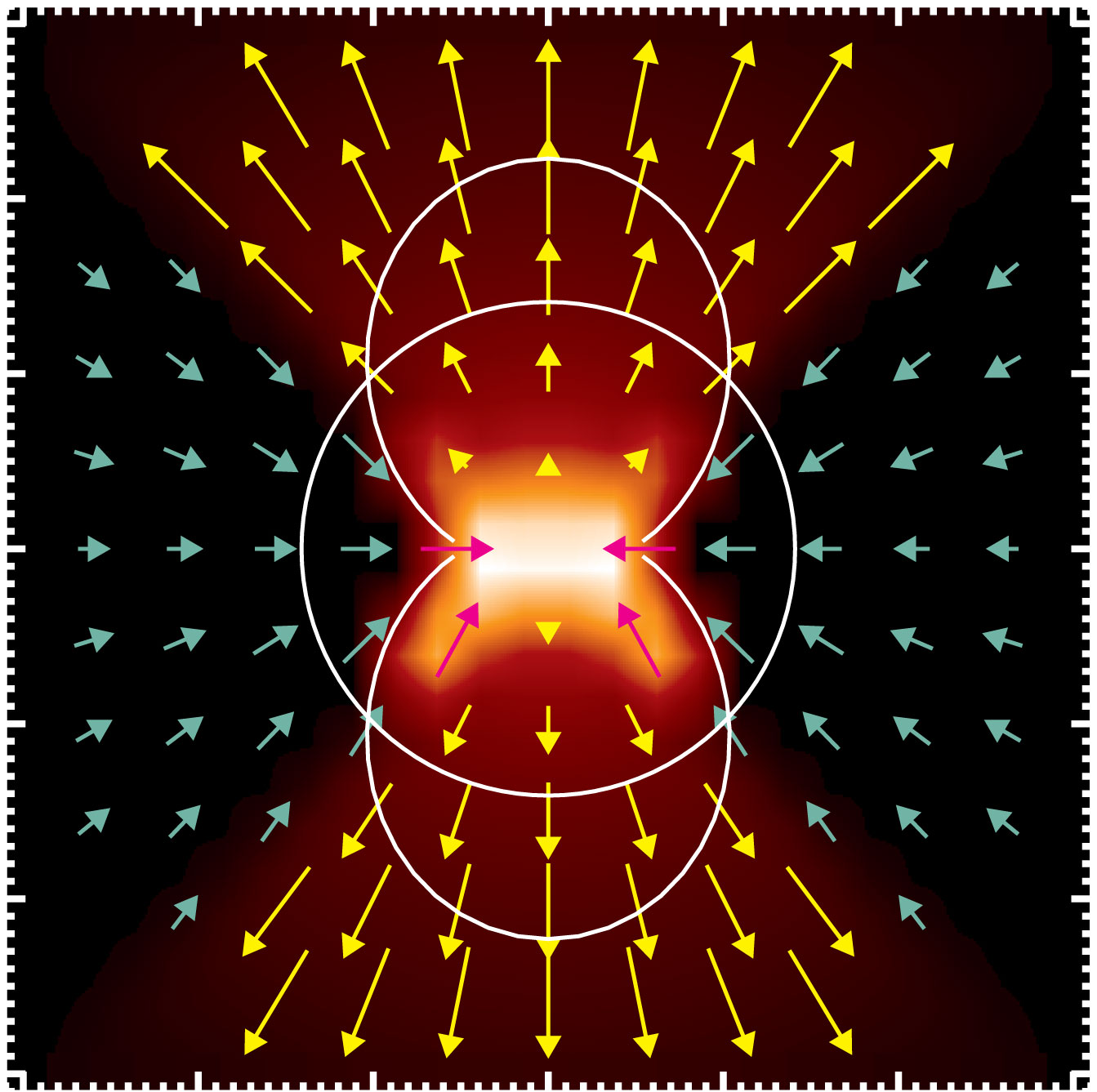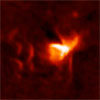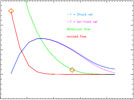- Eric Keto's Home Page
- High Mass Stars
- Starless Cores
- Extragalactic
- Radiative Transfer
- Hydrodynamics
- SMA Instrumentation
- IR Instrumentation
- MOLLIE radiative transfer
- Keto Prize
- Textbooks
| The Formation of Massive Stars and Clusters | ||||
|
Abstract Previous observations show that the hypercompact HII region W51e2 is surrounded by a massive molecular accretion flow centered on the HII region. New observations of the H53a radio recombination line made with the VLA at 0.45 arc second angular resolution show a velocity gradient in the ionized gas within the HII region of > 500 kms/pc comparable to the velocity gradient seen in the molecular accretion flow. New CO line observations made with the SMA at arc second angular resolution detect a molecular bipolar outflow immediately around the W51e2 HII region and extending along the axis of rotation of the molecular flow. These observations are consistent with an evolutionary phase for high mass star formation in which a newly formed massive star first begins to ionize its surroundings including its own accretion flow. Eric Keto & Pamela Klaassen, 2008, arXiv 0804.0514
Abstract Velocity shifts and differential broadening of radio recombination lines are used to estimate the densities and velocities of the ionized gas in several hypercompact and ultracompact HII regions. These small HII regions are thought to be at their earliest evolutionary phase and associated with the youngest massive stars. The observations suggest that these HII regions are characterized by high densities, supersonic flows and steep density gradients, consistent with accretion and outflows that would be associated with the formation of massive stars. Eric Keto, Qizhou Zhang & Stanley Kurtz, 2008, ApJ, 672, 423
Abstract The hypothesis that massive stars form by accretion can be investigated by simple analytical calculations that describe the effect that the formation of a massive star has on its own accretion flow. Within a very simple accretion model that includes angular momentum, that of gas flow on ballistic trajectories around a star, the increasing ionization of a massive star growing by accretion produces a three-stage evolutionary sequence. The ionization first forms a small quasi-spherical HII region gravitationally trapped within the accretion flow. At this stage the flow of ionized gas is entirely inward. As the ionization increases, the HII region transitions to a bipolar morphology with an initially narrow region of outflow about the bipolar axis and accretion elsewhere. At higher rates of ionization, the opening angle of the outflow region progressively increases. Eventually, in the third stage, the accretion is confined to a thin region about an equatorial disk. Throughout this early evolution, the HII region is of hypercompact to ultracompact size depending on the mass of the enclosed star or stars. These small HII regions whose dynamics are dominated by stellar gravitation and accretion are different than compact and larger HII regions whose dynamics are dominated by the thermal pressure of the ionized gas. Eric Keto, 2007, ApJ, 666, 976
Abstract Observations of the H66a recombination line from the ionized gas in the cluster of newly formed massive stars, G10.6--0.4, show that most of the continuum emission derives from the dense gas in an ionized accretion flow that forms an ionized disk or torus around a group of stars in the center of the cluster. The inward motion observed in the accretion flow suggests that despite the equivalent luminosity and ionizing radiation of several O stars, neither radiation pressure nor thermal pressure has reversed the accretion flow. The observations indicate why the radiation pressure of the stars and the thermal pressure of the HII region are not effective in reversing the accretion flow. The observed rate of the accretion flow, 10^-3 M/yr, is sufficient to form massive stars within the time scale imposed by their short main sequence lifetimes. A simple model of disk accretion relates quenched HII regions, trapped hypercompact HII regions, and photo-evaporating disks in an evolutionary sequence Eric Keto & Kenneth Wood, 2006, ApJ, 637, 850
Abstract The classical model for the pressure-driven expansion of HII regions is re-evaluated to include the gravitational force of the star responsible for the HII region. The model shows that the gravitational attraction of the star maintains a steep density gradient and accretion flow within the ionized gas and prevents the HII region from expanding hydrodynamically unless the radius of ionization equilibrium is beyond the radius where the sound speed of the ionized gas approximates the escape velocity. Once past this critical radius the HII region will expand rapidly and the accretion flow through the HII region is quickly reduced. However, in contrast to the model without gravity where the velocity of the ionized gas is everywhere outward, in the model with gravity, the velocity within the HII region is always inward. The model implies that newly formed massive stars within dense molecular cores may initially form very small HII regions that at first evolve slowly through an increase in ionizing flux as would be caused by an increase in the mass or number of stars through continuing accretion through the HII region. Eric Keto, 2002, ApJ, 580, 980
| ||||
|
|

